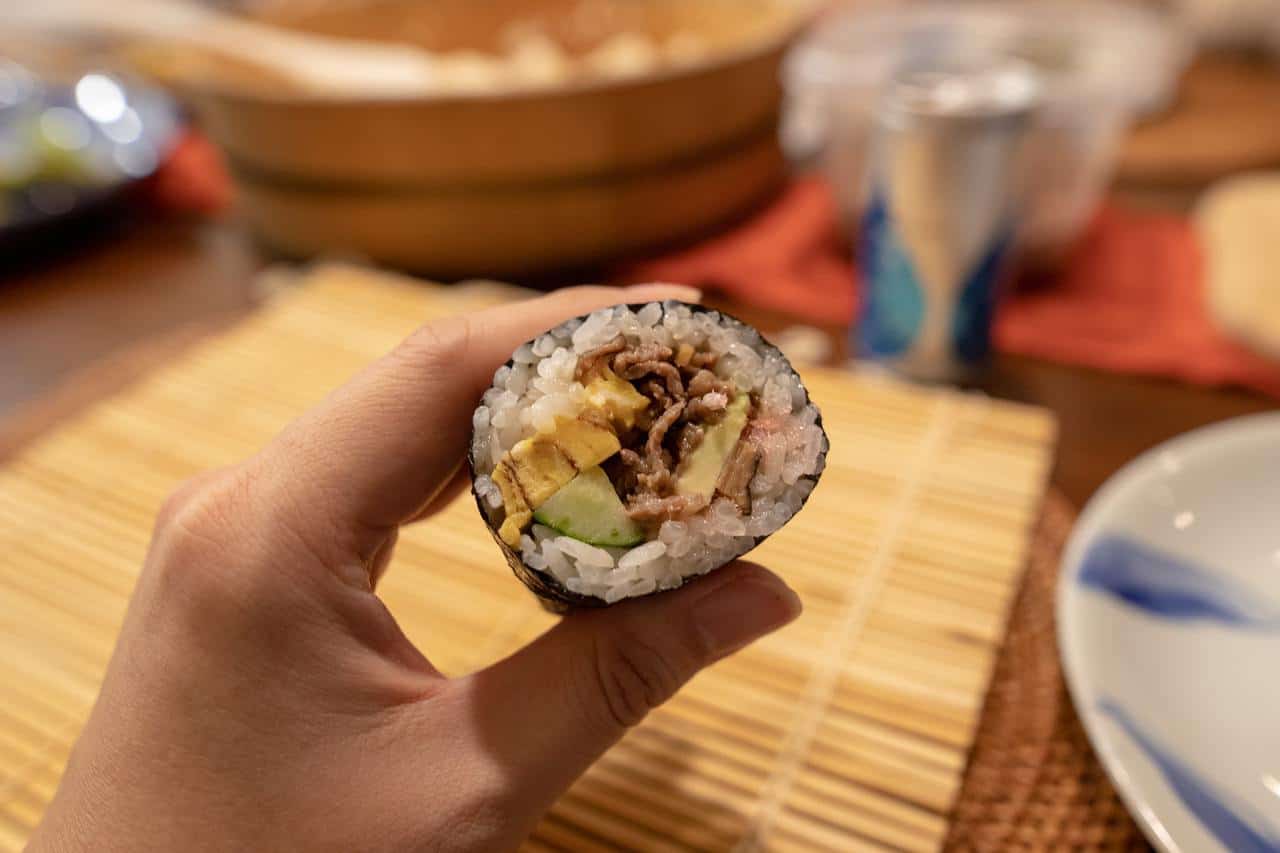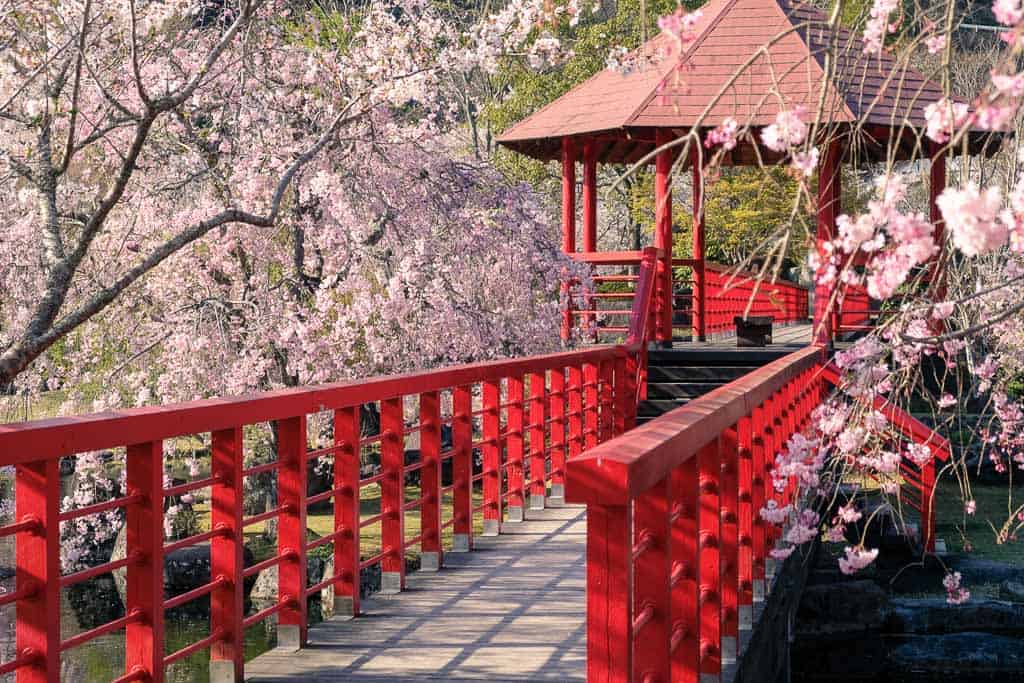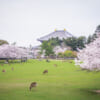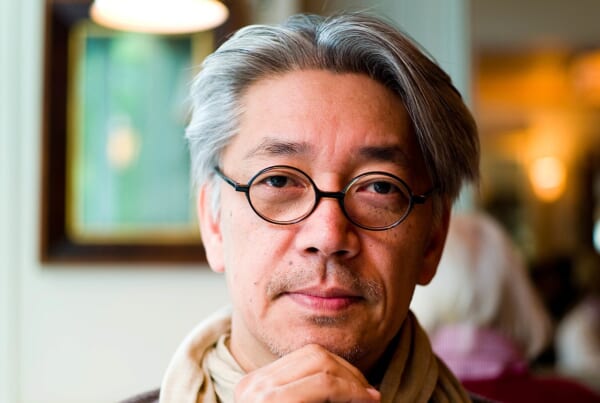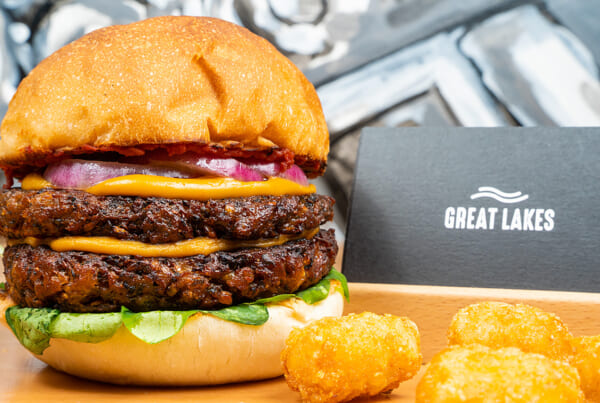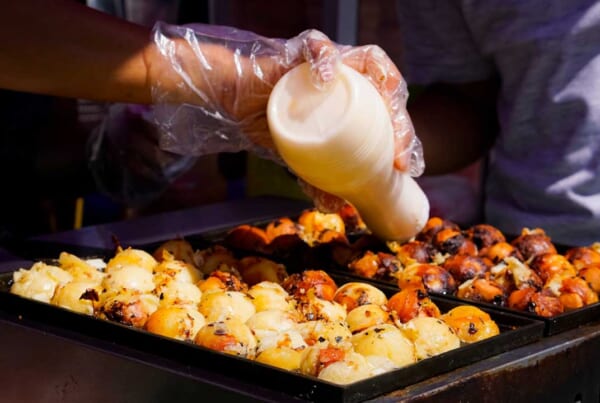On Setsubun 節分, the day before the beginning of spring in Japan, eating mamemaki sushi 豆まき is a nationally recognized tradition. This ritual involves throwing roasted soybeans to ward off evil spirits and welcome good fortune. However, there is another tradition that is just as beloved: eating ehomaki 恵方巻き. This uncut sushi roll has become a symbol of Setsubun, bringing luck and prosperity to those who follow its unique customs.
Where Does Ehomaki Come From?
Ehomaki, which translates roughly to “lucky direction roll,” is a type of futomaki 太巻き—a thick sushi roll — filled with seven specific ingredients. These fillings often include cucumber, shiitake mushrooms, and cooked egg, but there are many variations featuring seafood, regional specialties, or even modern adaptations.
The use of exactly seven fillings is not arbitrary; it symbolizes the Seven Lucky Gods 七福神 (Shichi Fukujin) from Japanese folklore, who are believed to bring blessings such as wealth, longevity, and happiness. Each bite of an ehomaki roll, packed with these seven ingredients, is said to invoke the gods’ goodwill for the year ahead.
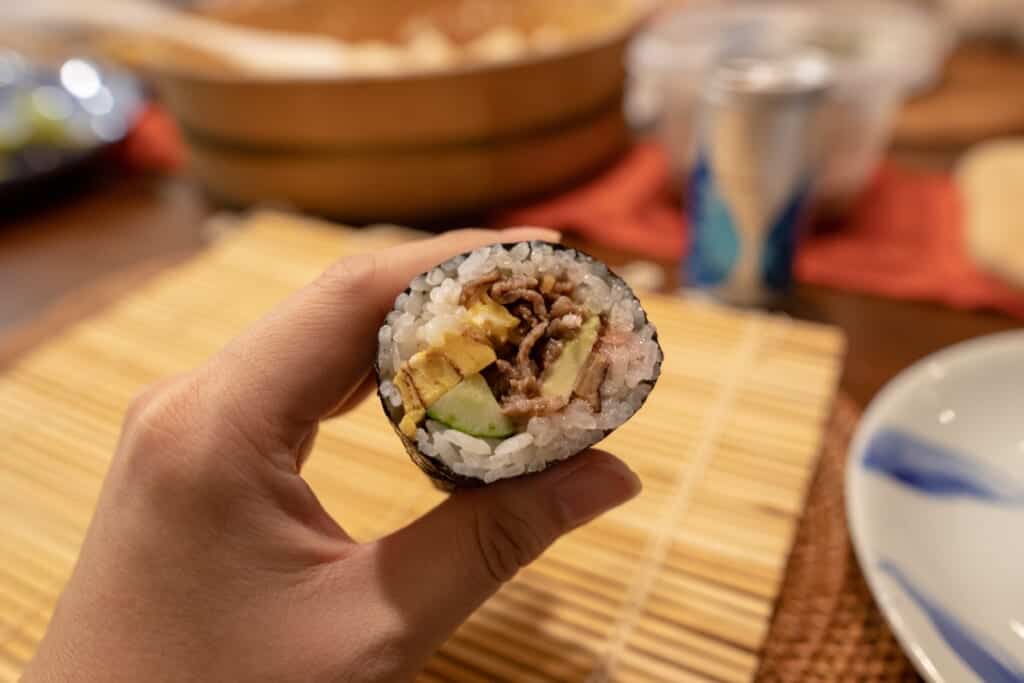
Ehomaki is thought to have originated in the Kansai region, possibly as early as the 1930s, when sushi and seaweed trade associations began promoting the idea. The practice gained national popularity in the 1980s, thanks to a marketing campaign spearheaded by the 7-Eleven convenience store chain. Today, ehomaki is an integral part of Setsubun celebrations across Japan.
How to Eat an Ehomaki
The way you eat an ehomaki is just as important as the ingredients it contains. Here’s how to perform the ritual:
- Face the Lucky Direction: Each year, there is a specific “lucky direction” based on the zodiac signs and the guidance of the Seven Lucky Gods. In 2025, for example, the lucky direction is south-southeast.
- Hold the Roll Whole: Unlike other types of sushi, you don’t cut ehomaki into smaller pieces. The roll must remain intact, symbolizing unbroken luck and fortune.
- Eat in Silence: Close your eyes, make a wish for the coming year, and eat the roll without speaking until you’ve finished it entirely. The silence is believed to ensure that no good luck escapes while eating.
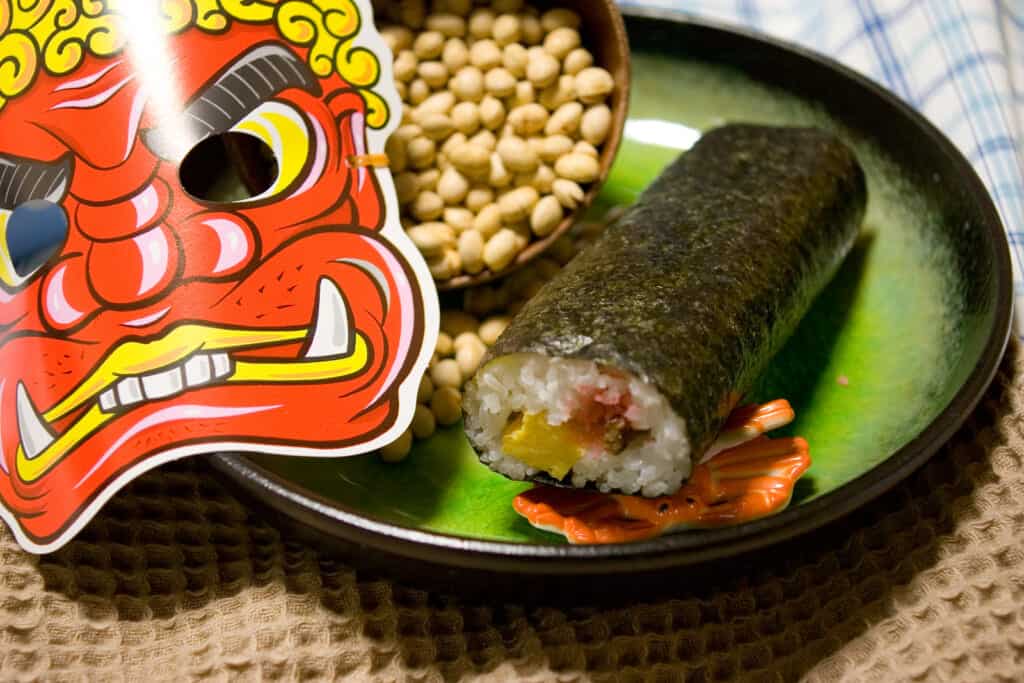
Imagine the scene: a family gathered around the dinner table, all facing the same direction, eating in complete silence. It’s a solemn yet uniquely fun experience that ties tradition with hope for a prosperous year.
Mamemaki vs. Ehomaki: What’s the Difference?
While mamemaki has been practiced for centuries as a way to drive away bad spirits by throwing roasted soybeans, ehomaki is a relatively modern tradition. The idea of eating uncut sushi rolls on Setsubun is said to have originated as a marketing strategy in the Osaka area. Initially called marukaburi sushi 丸かぶり寿司 or simply makisushi 巻き寿司, the practice was rebranded as ehomaki in the 1980s by clever marketers.
Today, supermarkets, convenience stores, and sushi shops nationwide promote ehomaki with elaborate advertisements in the weeks leading up to February 3rd. In addition to traditional sushi rolls, you’ll find creative alternatives such as roll cakes and even burrito-style versions, ensuring that everyone can enjoy their own “lucky roll” in some form.
Unlike mamemaki, which involves interaction with the community or family through the bean-throwing ritual, ehomaki focuses more on personal reflection and quiet observance. Both traditions, however, share the same goal: to welcome a year of health, happiness, and prosperity.
Where to Buy Ehomaki
If you’re in Japan during Setsubun, finding an ehomaki is easy, especially in urban areas. Here are some of the best places to purchase them:
- Supermarkets: Major grocery stores stock a wide variety of ehomaki rolls in the days leading up to February 3rd. From traditional styles to creative twists, there’s something for everyone.
- Convenience Stores: Chains like Seven-Eleven, Lawson, and FamilyMart offer convenient options, often with smaller-sized rolls perfect for solo travelers or light eaters.
- Specialty Sushi Shops: For a more authentic experience, visit a local sushi restaurant or shop. These establishments often prepare high-quality, freshly made ehomaki.
So on Setsubun day, gather your family or friends, face the lucky direction, and enjoy an ehomaki in complete silence. With every bite, you’ll be embracing a tradition that promises health, happiness, and good fortune for the year ahead.


